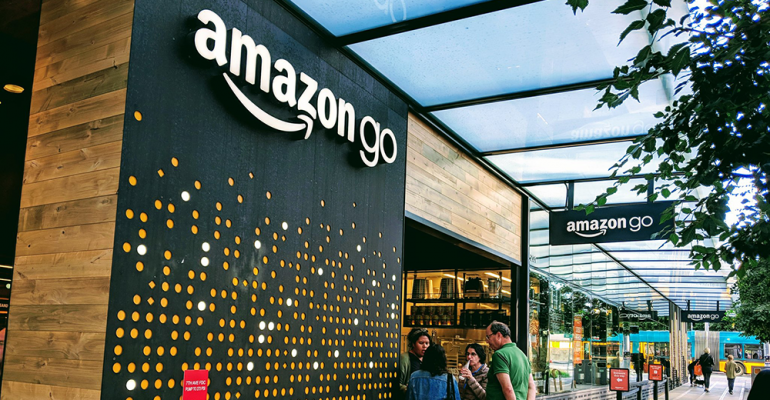Does Amazon Go sign the death of traditional grocery shopping?
As retail companies are trying to integrate digital technologies and innovative process into their business, former pure player Amazon strikes hard with the introduction of Amazon Go.
Amazon Go is the first check-out free shopping experience: simply enter a shop, grab your items and leave. Using a blend of technologies like sensor fusion, which captures the orientation of an item in 3D, Amazon Go allows to just grab your groceries and automatically add them to your virtual shopping cart. When you leave, your saved bank details are used to charge you – simple as that. Amazing, right?
I think this development is highly interesting – not so much for the technology is uses, but for showing that physical shopping is not dead and just needs to be improved with a blend of technology to become more convenient and relevant for busy, hyper connected consumers.
Seeing a pure player come to the physical space, however has big implications for traditional retailers, and not only pleasant ones. First, Amazon enjoys strong popularity and reputation as a top service provider. They can build on this existing image to bypass all awareness and reputation building with their physical store and steal mind shares from traditional retailers. Second, as some industry experts point out, this poses a major threat to physical business models relying on cashiers, and some fear the job loss implications of the Amazon Go format. Third, pure players like Amazon have long mastered the art of managing big consumer data: another competitive advantage compared to many physical retailers still struggling with this practice.
I think however that such models are only the next step of improved shopping experiences. Self-check out already exist everywhere, some people purchase in-store on their mobile apps, others prefer ordering from home and picking up, or being delivered with Amazon Dash. I think Amazon Go is not the death of physical stores and jobs, quite the opposite. It only creates a different kind of experience to accommodate the needs and preferences of highly hybrid, urban and busy shoppers.
The first pilot store has been launched in Seattle but is not open to the public yet – the plan is top open over 2000 shops in the introductory phase according to the Wall Street Journal. I cannot wait to see it open in Europe. Let’s hope it’s before 2030!

0 Comments
Be the first to comment on this article.
Hi Lau,
Good read, thanks!
I am not trying to sound like the dramatic, anti-tech, person but doesn’t this scare you a little? I surely understand how Amazon (and others) would capatalise on their name and experience, and how this opens new avenues for many stakeholders (including, if not mostly, shoppers) but I cannot help but think whether this means a some sort of beginning of a “take-over” for a lot of job families. It is for the very same reason that the opportunities are so varied and intertwined the like of these new processes have the potential to get us (me?) troubled.
Again, not discounting that innovative technologies are a spearhead mechanism for the future but just speaking my mind, I guess! 🙂